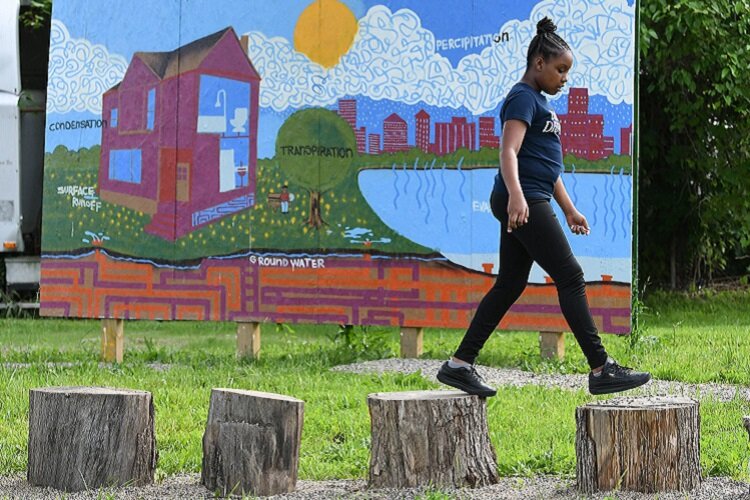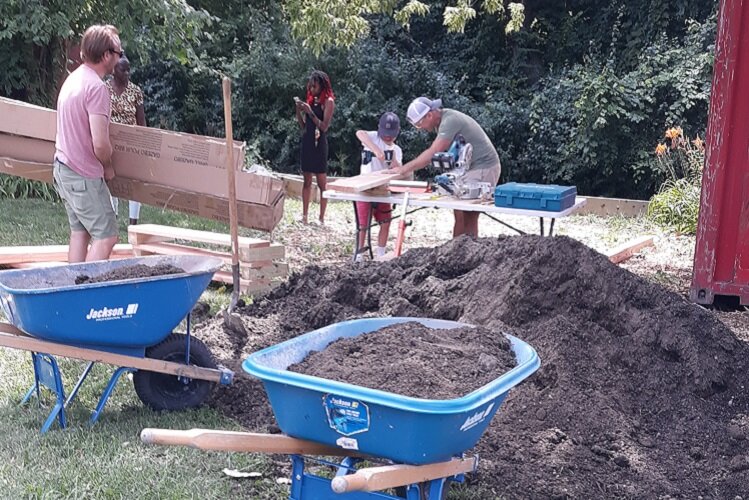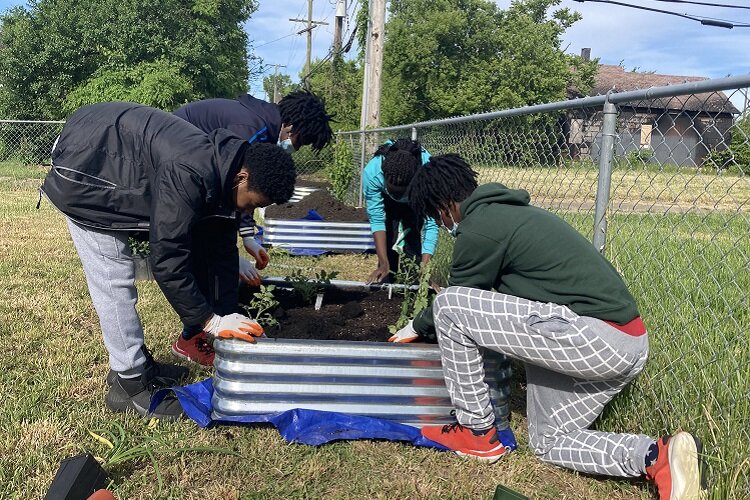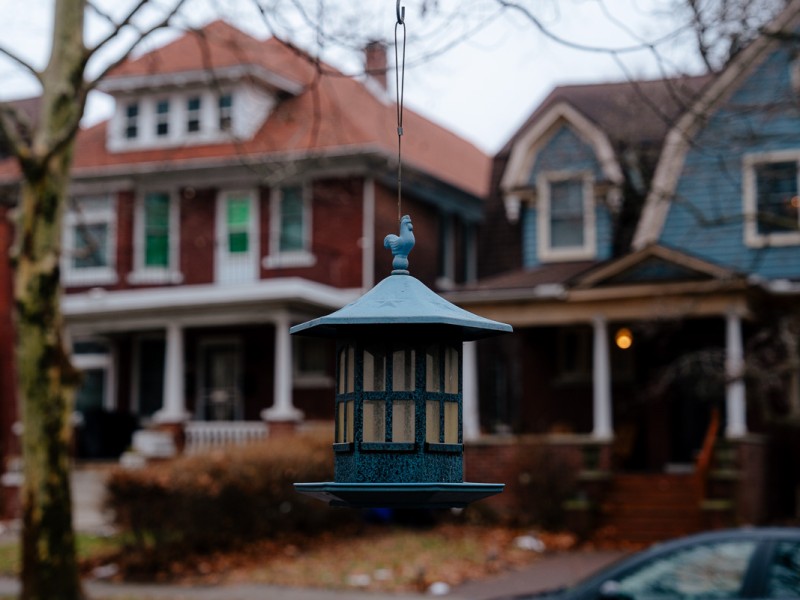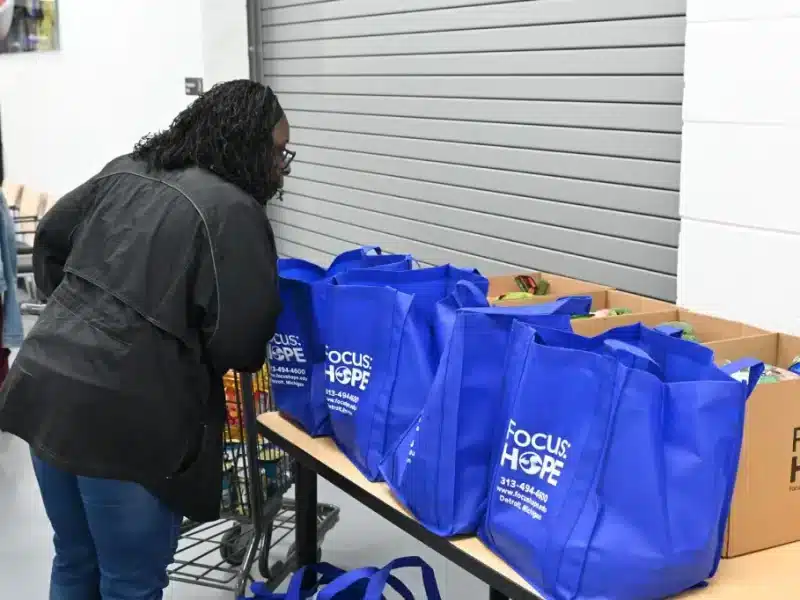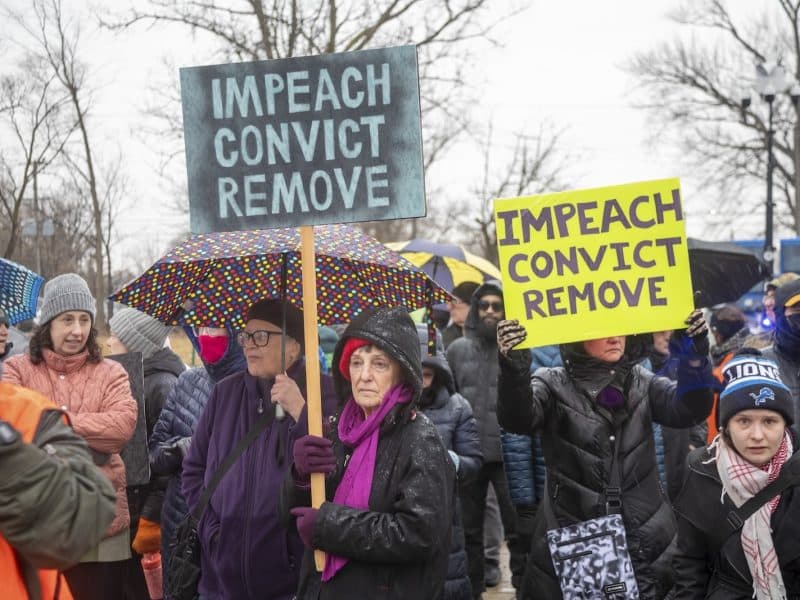Resilient Neighborhoods: These east side groups are helping to reimagine sustainability in Detroit
These organizations are showing just how important community members are to building a sustainable future.
Delores Orr lives in Detroit’s East Village neighborhood and is dedicated to improving her community.
As the president of the Cadillac Boulevard Block Club, a board member with the East Village Association and a longtime community volunteer, she’s committed

herself to making Detroit’s east side a cleaner, safer, more hospitable place to be. A few years ago, Orr also began to develop an interest in improving her local environment through her relationship with the Eastside Community Network (ECN), a community development organization she’s been involved with for about a dozen years.
Her enthusiasm for the natural world was first sparked about five years ago when, with financial support from ECN, she planted three magnolia trees on Cadillac Boulevard. In 2019, she was chosen by ECN to be part of its LEAP (Lower Eastside Action Plan) sustainability fellowship, a program that educates local leaders on environmental matters and provides them with grant money to work on related community projects. Orr was awarded $5,000 to work with other fellows on a pocket park called the East Village Community Picnic Area, which is located at the corner of Fischer Street and St. Paul Street.
“[The purpose] was to create a sustainable space in our community,” says Orr. “It’s a gathering space and picnic area. And [there are] raised bed gardens in which we have beautiful flowers and lots of vegetables.” In addition to the organic garden, the park also has a variety of children’s activities like a giant Connect Four game and hand washing basins to keep people safe during the pandemic.
Orr, who sits on ECN’s steering committee, says being involved with the organization’s environmental work motivated her to bring rain barrels and recycling bins to her neighborhood. And beyond that, it’s really changed her perspective on environmental issues.
“My experience with sustainability has been really eye-opening, because I didn’t know that much about it,” says Orr. “I now know I can help the environment.”
Growing Sustainability on the East Side
Donna Givens Davidson, ECN’s President and CEO, understands how disconnected environmental issues can seem from people’s everyday experience.
“When people talk about rain gardens, people look at the aesthetics and say that’s not attractive and don’t really understand the purpose,” she says. “When people talk about air quality, you can’t see air quality, even though there are toxins in the air and you should be fighting for improved protections from the state and federal government or demanding street trees.”
The purpose of the LEAP Sustainability Fellowship is to overcome this understandable awareness gap through community organizing and hands-on work. It supports local leaders interested in working on climate-related sustainability projects in their neighborhoods. Each fellow engages in a year of training focused around environmental issues and community leadership development. They also develop projects aligned with these goals that may be supported with grant money.
Like Orr, Katrina Watkins is an eastsider who participated in the fellowship’s 2019-2020 inaugural year. Watkins is the founder of an organization called Bailey Park Neighborhood Development Corporation (BPNDC), which does a variety of community development work in Detroit’s McDougall-Hunt neighborhood.
Originally known as the Bailey Park Project, BPNDC was established in 2013 with

the goal of cleaning up blighted lots and creating a new park for the neighborhood. The group has been instrumental in spurring on the creation of the McDougall-Hunt Neighborhood Association and working with other local organizations to create a shared redevelopment vision for the area.
BPNDC has also created a program called the Bailey Park Grounds Crew which pays local residents to do community landscaping work. The crew
clears overgrowth and maintain vacant lots in the area, provides affordable lawn maintenance services to residents and offers free lawn care to seniors. The grounds crew grew out of Watkins and two other BPNDC members’ involvement in the sustainability fellowship, which also awarded them a $15,000 grant to help get the project on its feet.
“We were able to purchase our first commercial grade lawn care equipment, which is what we needed,” says Watkins. “We were also to hire somebody to come in and provide training.”
Last year by participating a program called Rain Gardens To The Rescue, BPNDC had an opportunity to learn about and help implement a rain garden, a special garden with native plants and flowers set in shallow depression that’s used to collect excess rain water. This year, BPNDC hopes to establish its own rain garden at Bailey Park, the community-driven park at Elmwood Street and Hunt Street it oversees. Watkins is currently looking for funding to help pay for that project.
In addition to green stormwater infrastructure, her group is also interested in solar energy; last year, it installed three solar light posts in McDougall-Hunt. Watkins is excited to bring these sustainable developments to the neighborhood and grateful in having had the support of ECN and the LEAP sustainability fellowship to help make them a reality.
“I really can’t say enough good things about ECN,” says Watkins. “They really helped to build our capacity and they led the process with our McDougall-Hunt sustainability plan, so that we can successfully do what we’re doing now.”
ECN Goes Green
Eastside Community Network hasn’t always been so focused on environment-related issues. For most of its 37 year existence, the group functioned much more like a traditional community development organization as it provided services to residents and stakeholders in an area of the east side bounded by I-94, the Detroit River, Mount Elliott Street, and Alter Road.
That all started to change in the latter years of the 2000s, as the financial stability of institutions in Detroit began to buckle under the weight of the Great Recession. As
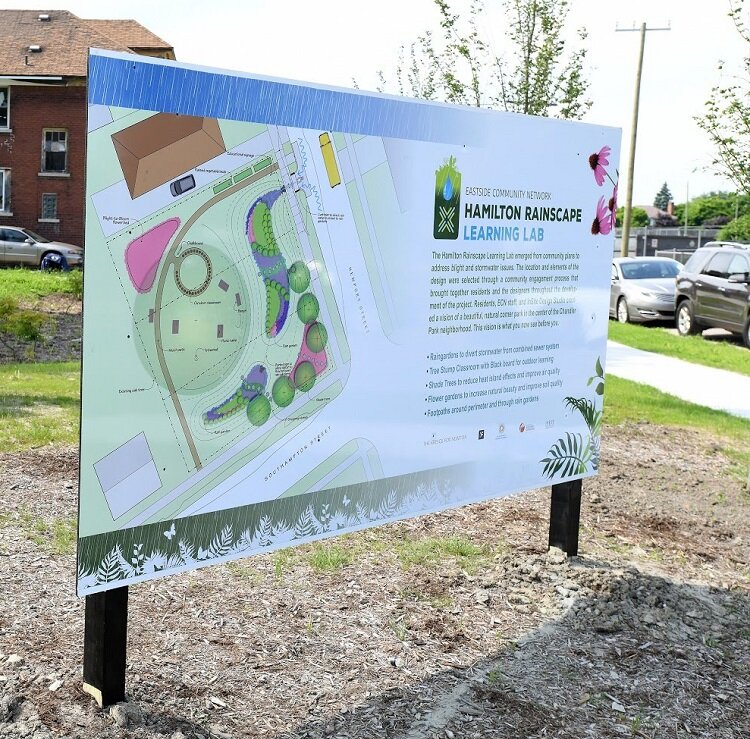
foundation money began to dry up and ECN began to reevaluate its direction, the organization’s leadership came into contact with Jodee Raines, then vice president of programs with the Erb Family Foundation.
In 2012, with the support of the Erb Family Foundation and other donors, ECN and other area community development groups began developing the Lower Eastside Action Plan, a community-driven plan to transform vacant land and properties for the betterment of the community in an area of the east side spanning between Mt. Elliott, Warren, Outer Drive, and the Detroit River. Among other things, the plan began a process of looking into the possible benefits green infrastructure might have for the area.
In 2016, Donna Givens Davidson replaced ECN founder Maggie DeSantis as the organization’s chief executive officer and was faced with a decision on how to proceed on the LEAP project. That year, ECN was awarded a Kresge Innovative Projects-Detroit to explore whether green infrastructure options like native plants could be used as a money-saving alternative to conventional grass maintenance on vacant land. Although their research ultimately showed it did not cut costs, it did get ECN interested in further exploring the impact green infrastructure could have on the community it serves. Since that time, the organization has become increasingly interested in how environmental concerns intersect with its other work.
In 2017, ECN received grants from Kresge and other organizations to build a rain garden learning lab on three vacant lots across the street from Hamilton Academy, the only public school in the city’s Chandler Park neighborhood. Located at 5315 Newport Street, the Hamilton Outdoor Rainscape and Learning Lab features several rain gardens, rainscape infrastructure that redirects rainwater into the gardens, murals to explain the water cycle, and other elements of an outdoor classroom that can be used to teach school children and train adults interested in earning master rain garden certification.
Although the city of Detroit has taken steps to upgrade aging sewer infrastructure in recent years, it remains an issue in the community ECN serves and other Detroit neighborhoods. Givens Davidson hopes that the learning lab will serve as a demonstration of how green infrastructure can address existing stormwater problems that are being worsened by climate change.
“Every time there’s a heavy rain, and the rains are heavier now, there are sewer backups in the communities, flooding in the streets and the combined sewage system ends up releasing untreated sewage into the Detroit and Rouge Rivers,” she says. “So the more rainwater we can keep out of the combined sewer system, the less often that has to happen, both at the neighborhood level and the treatment center level.”
Wellness and Resilence
ECN is also transforming its offices at 4401 Connor Street into a wellness and climate resiliency hub. The reimagined facility is being renamed the Stoudamire Wellness Hub after community leader and entrepreneur Marlowe Stoudamire who died last year from COVID-19. Among its new additions will be a fitness room, dance studio, community room, teen center, and tech hub. It will also

feature solar energy infrastructure with battery backups and green stormwater infrastructure to prevent flooding.
The goal of the redesign is to help residents meet their holistic health needs while also providing a safe location where they can meet needs that may arise during a climate emergency.
“When you have communities like ours, where you don’t have transportation, where housing is inadequate to protect people, there’s not a lot of local places in the community for [residents] to access,” says Givens Davidson. “So what we want to do is have places inside the community where people can go to get their needs taken care of.”
Inspired by the project, the Bailey Park Neighborhood Development Corporation is also working on its own resilience hub, which will be located in a durable structure a block away from Bailey Park. Funded through a grant from the Ford Foundation, it will eventually offer emergency and social support services, internet access, health and wellness workshops, and workforce development. And like the Stoudamire Wellness Hub, it will have backup power and allow residents to seek refuge there in the event of weather, water, or other emergencies. BPNDC is currently using the tents at the space for outdoor social distancing events.
Organizing for a Sustainable Future
As its developed more of an environmental focus over the years, ECN has begun to engage in advocacy. On matters of climate equity, the nonprofit works closely with an advisory group made up of residents city and state officials, and technical experts from across Detroit. It’s also been involved with an environmental justice struggle to get Stellantis (formerly Fiat Chrysler) to reduce emissions at its new Detroit Assembly Complex-Mack factory on the city’s east side.
There’s a lot of work to be done on the city’s east side, however, environmental and otherwise. Residents there must deal with the legacy of heavy industry in the area, air pollution, toxins in the soil, aging infrastructure, and the impact of climate change. And the long shadows of poverty and institutional racism makes the community more vulnerable to all these issues and more.
Reflecting on this situation, Givens Davidson is reminded of her favorite prayer, the serenity prayer: “God, grant me the serenity to accept the things I cannot change, courage to change the things I can, and wisdom to know the difference.” In those words, she finds hope that working with others in the community her organization will play its part in creating a more sustainable future for the east side and beyond.
“We’re working with people inside our community to change the things we can, and then encouraging them to demand the changes we can not make on our own,” she says. “I think that the politicians are aware of us. And I think when we are successful in completing the wellness hub, we’ll have a replicable demonstration [of green infrastructure] that can be practiced across the city of Detroit.”
Resilient Neighborhoods is a reporting and engagement series that examines how Detroit residents and community development organizations are working together to strengthen local neighborhoods. It’s made possible with funding from the Kresge Foundation.
